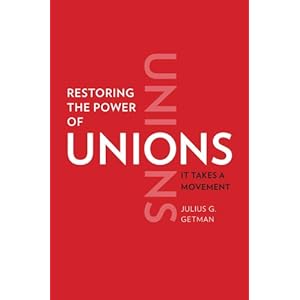Unions Could Turn Wisconsin into a Big Victory

The union movement faces a crisis. It has failed to organize effectively in the private sector, and public-sector unions, which contain the majority of union members, are under attack across the country. Wisconsin has led the attack, broadly eliminating collective bargaining for the majority of public-sector unions. And similar anti-collective bargaining legislation is being considered by Republican-controlled state legislatures throughout the country. The threat to workers is real, immediate, and backed by well-funded forces. Republicans understand that if they can break the labor movement they are likely to be politically dominant for decades.
Unions and their members are fighting back, but for how long? It is possible that, under the pressure of consistent legislative defeats, union supporters will become discouraged and labor’s voice will be limited to the angry threats of increasingly impotent and frustrated leaders.
But there is at least an equal chance that the boisterous, chanting, singing crowds who have come daily—on their own—to the Madison state house to protest the elimination of workers’ rights are the harbingers of a new, revitalized labor movement. They have already brought the cause of organized labor to the forefront of national consciousness. As Professor George McCartin of Georgetown University stated recently in an address to the AFL-CIO leadership, “Thanks to Governor Walker, collective bargaining has suddenly, improbably become part of a passionate national debate.” To the surprise of many observers, unions seem to be winning the debate. Polling data show that people overwhelmingly oppose what Governor Walker and the Republican legislators have done. Polling data also indicate that, while people are interested in the debate, a very high percentage (40) know little or nothing about unions. The data suggests that unions have the chance to reintroduce themselves to the American people. As Professor McCartin noted, “People are now open to the arguments you [unions]can make.”
Union leaders are meeting continuously, planning how to maintain the momentum that has developed from the Wisconsin protests. They are increasingly aware that key to victory is through the voices of their members. As John Wilhelm, President of UNITE HERE, told me, “The members can tell the union’s story better than any leader, including me.” It easier for ordinary people to identify with teachers, health care workers, nurses, and firefighters than it is to identify with union leaders, who are well-paid and politically influential.
Because the Wisconsin protests are a true example of bottom-up organizing, media coverage has for the last few weeks focused on the protestors. For instance, a Sunday, March 13 Huffington Post article on the Wisconsin protests quoted two school teachers. One, art teacher Marilyn Rolfsmeyer, stated, “We are never going to give up.... There is hope here. I feel it…” On the same Sunday, the New York Times quoted Ann Sodermana, a high school science teacher: “We wanted to come together.... to let people know it’s not over.”
Maintaining focus on teachers and other workers will likely prove difficult as the story plays out. News media typically seek out leaders, people with impressive titles who can speak definitively and put events into a broader context. And labor leaders, like most people, appreciate the chance to have their views heard. Yet if the temptation is understandable, it should be resisted. This is not to say that union leaders must remain quiet. It is inevitable that Rich Trumpka, head of AFL-CIO, should be interviewed and that he should express his solidarity with the endangered. But, for the most part, union leaders should insist that, even in national TV interviews, they be accompanied by rank-and-file members.
Unions can use the current situation to demonstrate the breadth of support that still exists in this country for workers’ rights. A continuing picket line at the state capital could help to achieve this goal through the diversity of those willing to walk the line. The line can be staffed one day with leaders from the civil rights movement; another day it might feature professional athletes, including several Green Bay Packers. A third day it might be made up of scientists, writers, artists, and musicians. I believe that a surprising number of prominent economists could be recruited.
Large-scale demonstrations have been the fuel of this surprising display of union support. But they will be difficult—indeed, impossible—to keep up on a daily basis for as long as this battle is likely to continue. And yet public outpouring, marches, and rallies must continue on a regularly scheduled basis.
The potential effectiveness of such tactics was demonstrated during the 1988-89 strike by Local 14 of the Paper Workers Union, located in Jay, Maine, against International Paper Company. Local 14 conducted Wednesday night meetings that for a time made this small community on the Androscoggin River the heart of the labor movement. The meetings included pledges of support from all over the country, updates on the strike, passionate statements and occasional poems by strikers and their families, and pledges of support from union leaders and leading political figures. These meetings regularly ended with the singing of the union anthem “Solidarity Forever” as people in the audience locked arms and swayed to the music. The meetings helped to create a sense of being part of a movement that inspired the strikers and their families. Almost twenty years after the strike ended, International Paper Company signed a peace treaty with the steel workers, announcing their desire to avoid getting into such a battle with the union again.
Remember: unions became powerful during the Depression through the voices of people insisting on their rights. Now is the time for unions to return to these roots. No one knows how this Wisconsin story will end. The leaders of organized labor recognize both the danger and the opportunity. And, for once, they are unified. When organized labor is unified and determined, it succeeds. There is a good chance that historians will look back at this period as the beginning of organized labor’s resurgence.